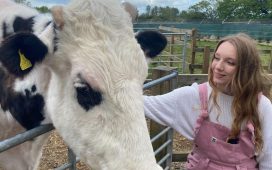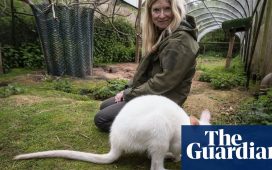
I began the project in 2016 after watching a TV programme in Poland about bullfighting schools in Spain. I can’t remember exactly what it was, but I was so surprised when I saw it: there were these young teenagers doing exercises in pairs, with one of them playing the bull and the other the bullfighter. It was just so striking and it made me realise that even bullfighters have to start somewhere. I’d never thought about it before and I found it really strange that these young boys already know they want to be bullfighters.
There was also something a little ridiculous when you look at them playing at being bulls and then compare that to the blood and everything else that comes to mind when we think about bullfighting. I think the initial idea for the project came from that contrast.
I discovered that there were more than 20 bullfighting schools in Andalucía and I wrote to five or six of them. Only one answered but I was still surprised because I thought they would be wary and would prefer to keep their distance. The teacher who replied told me to come and see how things were for myself.



-
Top: left, Francisco and Ivan, students of the bullfighting school in Écija, after classes; right, Francisco plays the part of the bull. Above: a former bullfighter, Jose, likes to come to the school in Écija to give advice to the apprentices.
I had my own prejudices – at the beginning I thought it would be a way for me to learn about machismo and how it has developed. But when I arrived at the school in Écija for the first time in November 2016, it was all a surprise. One of the first things the teacher said to me was: “I understand you don’t like this; I understand that what we’re doing here must seem very strange to you. But we grow up with all this and it’s something completely normal for us.” He understood my point of view – or how people abroad see things.


There were about 15 or 20 boys at the school. Most of them were teenagers but there was also one very focused six-year-old boy. Normally you have to be nine to start, but he was so driven and already knew what he wanted. I asked the teacher what such a small boy could understand about killing and death. He told me that these children don’t think about it all – they think about the myths of the great bullfighters and the atmosphere of the bullring and the striking traje de luces that a torero wears.
If you look at the TV, at newspapers and magazines, at postcards and paintings and signs, you can see how prevalent the bull is in Andalucía. The animals are ubiquitous, so it’s not surprising that kids and teenagers are exposed to all that culture and folklore.


-
Top: young spectators in the arena in Osuna. Many are brought by their parents and grandparents. Centre: left, a young bullfighter, Adrián Centenera Peréz, after the fight in Osuna; right, Asier Ruiz de la Hermosa, from the bullfighting school in Guadalajara, in the bullring of La Algaba. In 2017 he killed his first calf. Right: most of the bullfighters are Catholics. They pray before the fight and sometimes take religious items with them into the arena.

What’s more, there are some events and fiestas that are free or very cheap, because they have a promotional goal and they are organised usually in smaller towns. That makes this culture accessible. But the other thing I realised during the project was that for a lot of them, it’s an intergenerational bond. Many are brought to the school by their grandfathers, but they also watch bullfights on TV together and go to bullfights in small towns. It’s a really strong connection between the generations. If you really love your grandfather and he’s an aficionado, it’s really normal for you to want to please him by getting involved

-
Above: a lesson in the bullfighting school in Venta de Antequera, Seville. Boys do most of the exercises in pairs – one of them plays the role of torero and the other the role of the bull. Right: Salón de Carteles, the Hall of Posters, in Maestranza Bullring, Seville

I asked the boys what their favourite films were and they said they liked watching old bullfighting movies from the 1950s and 60s. There’s an element of nostalgia in all of it. You’ve got that old myth about brave young men using bullfighting as a means to work their way out of poverty and become stars. It was almost like a Spanish version of the American dream. But bullfighters back then were also so close to death that they knew how to live – and live well – when it came to women and artistic adoration and fame. I think that and the nostalgia explain some of the appeal for kids today.



When I saw the kids training, I was struck by how nice they were and how disciplined. At first I thought I was going to do some kind of critique of it all, but I didn’t want to use the kids in that way because it’s just the world in which they happen to have grown up. I also came to realise that it wasn’t all about machismo. In a certain way, it’s not just about the killing either. It’s a really special atmosphere. I wanted to show that these aren’t cruel, aggressive, evil kids – which is how people in Poland usually see them.
I didn’t want to focus on the actual bullfights and how they fight the animals because those are images everyone’s already seen. For me, it’s not about the act of killing, it’s about the story behind it all: why does this tradition endure and why do these young guys follow it? That’s what I wanted to understand. I realised I couldn’t judge it all. If I judged it, I wouldn’t be able to carry on with the project. It’s just about trying to understand it.

-
“The formal bullfight is a tragedy, not a sport, and the bull is certain to be killed,” writes Ernest Hemingway in Death in the Afternoon
As told to Sam Jones in Madrid






